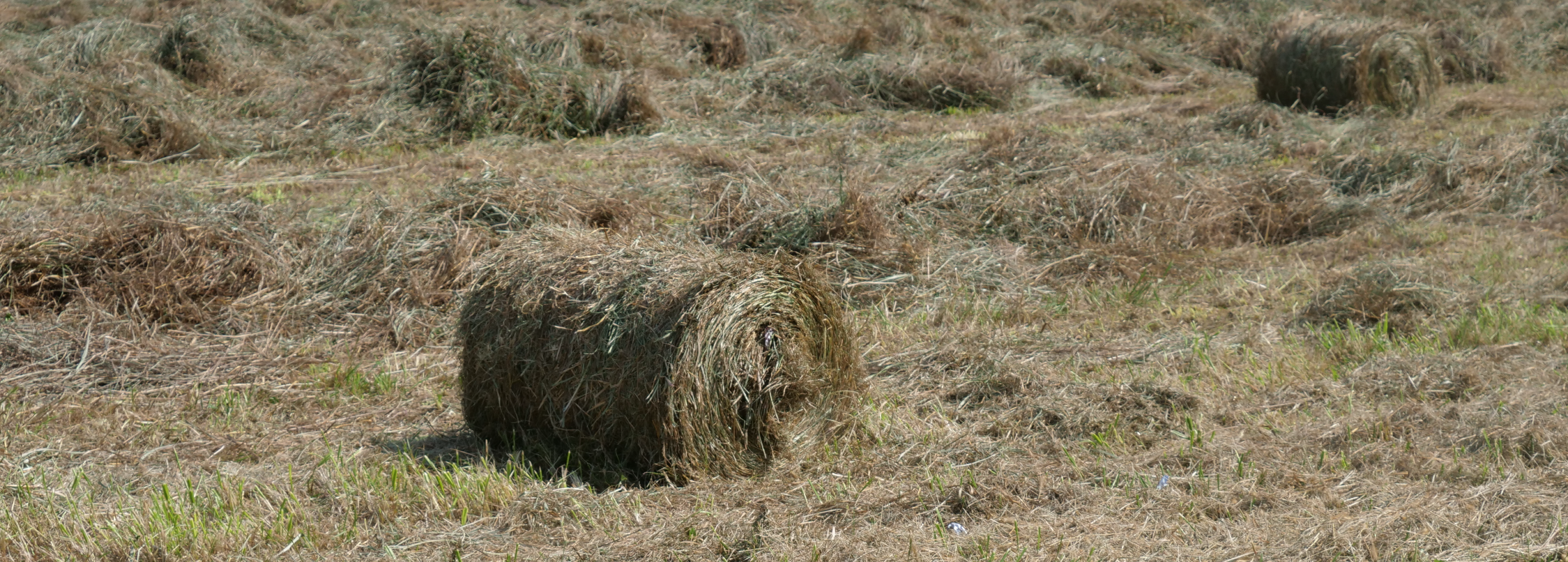When to Cut: A Guide to Timing Your Hay Harvest

Hopefully, you have used the slow winter months thinking ahead to a great baling season. Once the grass starts growing, you’ll need to be ready to spring into action! This blog will give some advice on how to know when it’s time to make the cut!
The haying season is divided into multiple cuttings, with the number of cuttings being dependent on the climate and geography of the region. In northern regions of the U.S. and Canada, where the summer season is shorter, farmers generally manage 2 cuttings per year. In more temperate areas, 3 cuttings are common, while the southern regions, where growing conditions are more favorable, may achieve 4 or more cuttings in a good year. The exact number of cuttings is influenced by factors such as rainfall, temperature, and location. For the first cutting, optimum conditions are generally reached around mid May in the south and late May in the north.
Understanding Hay Quality: The Late Boot Stage
Since hay quality is primarily determined by the maturity of the grasses at the time of cutting, this should be a primary consideration when deciding when to cut. While different cuttings yield different nutritional values (a topic we have covered in a past blog), the best time to cut hay is when the grasses reach what is known as the "late boot stage." This stage occurs approximately 6 to 8 weeks after the start of spring growth or 6 to 8 weeks following a previous cutting.
The "late boot stage" refers to the point when the seed head of the grass begins to emerge from the sheath. At this stage, grasses are transitioning from vegetative growth to reproductive growth, and protein levels are typically between 13-15%. After the late boot stage, grasses enter a reproductive phase where they focus on producing stems and seed heads, leading to a decrease in protein content and an increase in fiber. This makes the hay less nutritious.
Hay Cuttings: How Many for Your Region?
Another factor to consider is the number of cuttings for which a producer should aim each year. As stated above, 4 or more cuttings can be achieved in certain regions of the US. However, just because you can achieve more than 4 cuttings doesn’t always mean you should. More cuttings might produce forage of higher nutritive quality but can unfortunately place stress on stand persistence and vigor. One should weigh this fact when deciding a season’s mowing schedule.
Weather Conditions: A Crucial Factor in Hay Production
Knowing when grasses are ready to cut is only part of the equation—the weather plays a significant role in determining the best time for mowing. On average, mowing, raking, and baling hay takes about 3 days under good weather conditions. It's crucial to plan hay cutting around a window of at least 3 days of sunny, dry, hot weather to ensure proper drying.
Some farmers opt to mow on the last day of a rainy period to maximize drying time, while others wait until after a cold front passes, resulting in a drop of 10 to 15 degrees in temperature. This typically signals the arrival of clear weather with lower humidity—ideal conditions for hay drying.
The time of day is another factor to consider. Some farmers prefer to mow early in the morning to capture extra drying time, while others may choose to mow later in the day to take advantage of higher sugar levels in the grasses that rise to the top of the stems during daylight hours.
Be Ready to Cut: Equipment Preparations
While timing your hay cutting based on the weather and grass maturity can be unpredictable, there are steps you can take to ensure you're ready when the proper conditions align. Preparing your equipment during the off-season is essential for a smooth start to the haying season. (See this past blog for more information). So think ahead! Make sure your machinery, such as the Ibex TX45 Drum Mower, is in good working condition, so when field and weather conditions are right, you can hit the ground running.
Tractor Tools Direct has a full line of hay mowers and the parts and supplies you need to take full advantage of favorable haying conditions and set yourself up for a successful season. Need more advice on small-farm hay production? Haying Independence: The Ultimate Guide to Small-Farm Hay Production, written by TTD’s own content writer, can get you up to speed! To learn more or to make a purchase please visit our website or give us a call at 260-BALE-HAY today. Happy Haying!
Recent Posts
-
Small Upgrades, Big Impact: Best Kubota BX Accessories
The Kubota BX is one of the most popular compact tractors on the market—and for good reason. …May 8th 2025 -
When to Cut: A Guide to Timing Your Hay Harvest
Hopefully, you have used the slow winter months thinking ahead to a great baling season. Once the …May 1st 2025 -
Small Farm Haying Independence Made Easy!
"You can bale when your pasture is at its nutritional peak—not when the farmer down the …Apr 14th 2025




